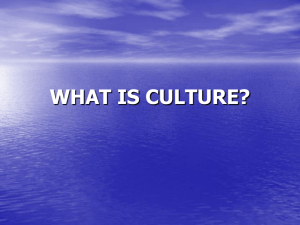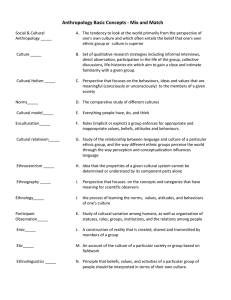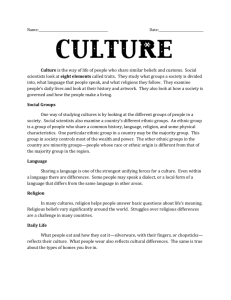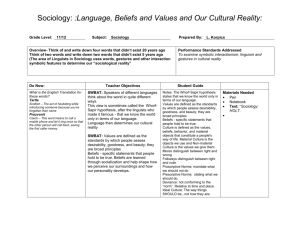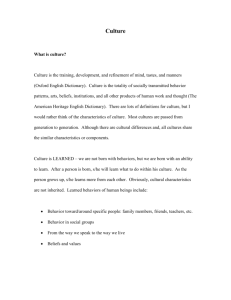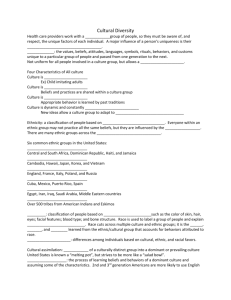A Fraction of the Feast: Introduction to Cultural Anthropology
advertisement
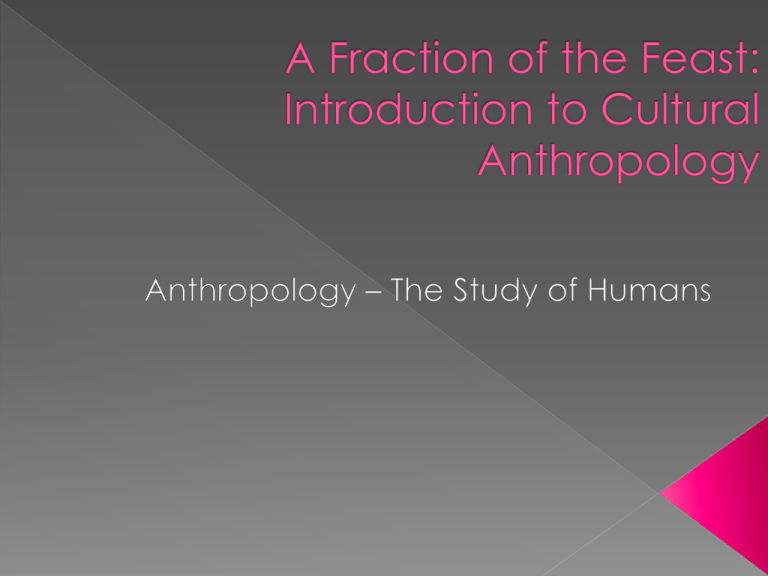
Studies All Humans Everywhere Studies All humans Through All Times Humans as Biological and Cultural Beings Cultural Anthropology › What humans do, why they do it, and the consequences Archeology › Study of people in the past using material culture Physical (Biological) Anthropology › Human evolution, genetics, and physiology Linguistics › Language and communication Knowledge, belief, art, law, morals, custom, and any other capability acquired by humans as members of society Material and Non-Material Culture › Non-Material Culture – What is in peoples’ heads Beliefs, attitudes, and assumptions Shared and Patterned What people do – real and ideal culture Material › What people make Ever Changing Adaptation Beliefs versus Social Structure Beliefs versus Tradition Length of Research › Fieldwork Language of Research Research Methodologies › Participant Observation › Accidental Fieldwork › Ethnography › Ethnology What people believe What people recognize How people behave Evolution Structural Functionalism Historical Particulism Symbolic Anthropology Global-International Biome National Culture Tribal or Ethnic Identity Regional, State, and Local culture Ethnic Identity Race is a Social construct Religion Political Beliefs Social Class Education Level Subsistence or livelihood strategy Rural or Urban Setting Age, historical age, development in life cycle Everyone is an immigrant Melting Pot—No Salad Bowl Democracy, Religious Freedom, and Capitalism Progress is good Resistance is futile Ethnocentrism › Focused on one’s own ethnic group Cultural Relativism › Understanding a culture in context, and not judging Theory of Mind › Others have different thoughts, knowledge, and understandings Culture Shock The world can’t be divided into us and them People who look similar may belong to very different cultures People who live in one country may belong to many different cultures People who share culture may live in many different spots around the world People who look very different then you may share your culture People who look and act like you may in fact have very different views and beliefs DON’T MAKE ASSUMPTIONS
